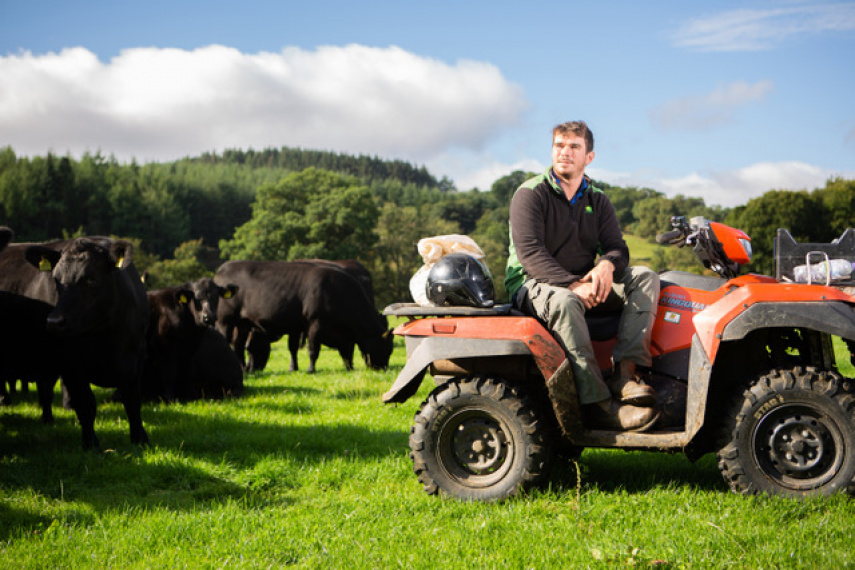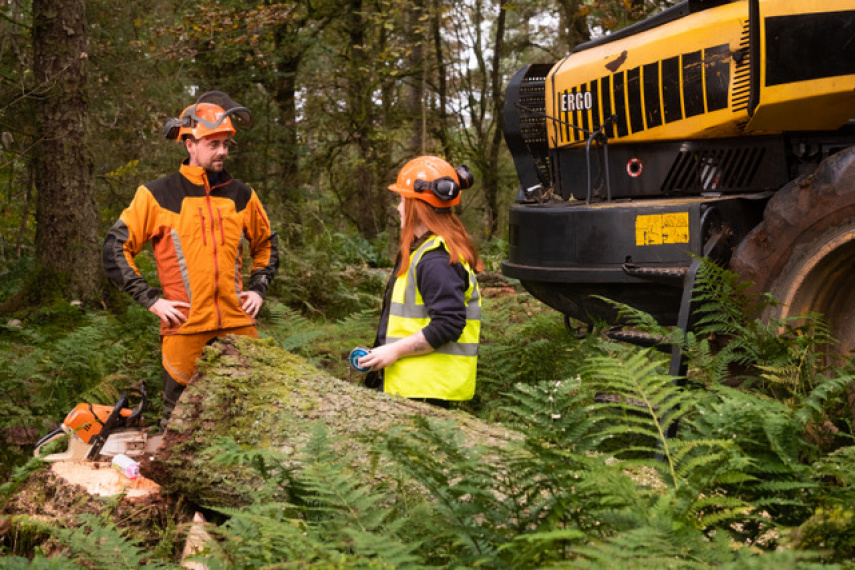Buccleuch Estates – Land Management Planning
The estates
Buccleuch is a limited company that operates in a range of sectors, including agriculture, forestry, property, hospitality and renewable energy. Their land holdings comprise one estate in England and three in Scotland.
Buccleuch’s main land-based business interests are agriculture (87%) and forestry (11%). Buccleuch is also a significant investor in property through its Buccleuch Property business.
We spoke about Buccleuch land management planning with Emma Pattison, Head of Executive Office, and Lyndsay McGregor, Head of Legal Services.

The planning process
Buccleuch’s land management statement summarises its purpose – to manage land sustainably in line with the strategic aims and core values of the business – and transparency of ownership.
The starting point for all management planning is the company’s vision statement, Emma explains: “’Buccleuch will be a diverse and sustainable business, with a reputation for working with communities, respecting the environment and contributing to culture through heritage.’ Together with our four values or guiding principles – Communities, Customers, Environment, Colleagues – Buccleuch seeks to apply this vision to all its land-use decision-making.”
For a business as large and diverse as Buccleuch, the route from executive-level articulation of vision and values to land management decision-making is well defined but can be protracted. “The first step is to communicate the vision and values throughout the business,” Emma says. “That began in 2019 and was a process of strategy and roll-out sessions and communication roadshows, with the aim of making all colleagues aware of the vision and values, and their role within the business. Our website plays a key role in sharing our vision throughout the business, and in showing how it can be put into practice.”
As with any landholder, Buccleuch is constrained, in implementing its vision, by the differing, sometimes competing priorities of business, communities and environmental interests. There is no single, straightforward way to achieve that balance, Lyndsay says.
“Each land use case is considered on its merits. It depends on the size of the area in question and whether it might make sense to consider adjacent land, at the same time, given the land-use and the number of people living there. The timing of discussions and decision-making is often determined by upcoming land-use changes – if a tenant farmer no longer wants to farm, for instance, or we’ve been approached by the local community who want to use a piece of land as a play park.”
Buccleuch use internal land use strategy groups as their mechanism for weighing up priorities, while ensuring compliance with the vision and values, Emma explains. “Each group brings together all the relevant people to consider an area of land. There are the estate managers, the enterprise leaders – in forestry, agriculture, renewable energy, commercial property, visitor services. Then there’s Lyndsay from legal and myself for the community engagement perspective. We all get together and discuss a piece of land and what can and should be done with it.”
In practice, the estate managers – who along with their teams possess a great deal of local knowledge – pull together an initial options appraisal of the piece of land, Emma explains. “Then each enterprise leader feeds into it, by considering what’s best for the community, for Buccleuch and for the long-term strategy. There might, for instance, be a very obvious and immediate use for a piece of land, but that might not take into account the long-term strategy or the wider area. An important point is that this sounds reactive, but we are also proactive. We don’t sit and wait for things to happen. We try to anticipate so there’s a rolling programme to look at different parts of the estates.”
Given the requirement for every part of the business to align closely with the core vision and values, Buccleuch estates do not currently devise local land management plans, Lyndsay explains. “We run Buccleuch as one group so it's important that issues are considered in the same way across all the different areas. There isn’t a management plan for each estate because they are managed as a whole, with land-use strategies for pieces of ground within each estate. Colleagues from across the estates participate in discussions on an estate where they are not based.”
The options appraisals work well, Emma explains, because estate managers and their teams are very aware of local issues. “Usually they live in the area and are very much in the bones of their communities. I think making a land management plan for each individual estate might bring more challenges than it would seek to address. You could get different estates doing things in quite different ways, which our approach avoids.”

Engagement
The impact of any land-use decision on communities is always part of Buccleuch decision-making, Emma says. “We have prepared a community engagement plan based on the protocol and route map produced by the Scottish Land Commission. The pandemic delayed the roll-out but it is now up on our new website.”
Just as the strategy group meetings can relate to events in two broadly differing ways – proactive and reactive – so does the engagement strategy identify two distinct but overlapping forms of engagement. These it describes as “business-as-usual engagement” and engagement relating to proposed changes. “All our estates have an open-door policy,” Emma explains. “Members of the local community are welcome to visit us – or call or email – at any time to discuss something or ask a question.”
Beyond that, the business-as-usual engagement methods outlined in the Plan include newsletters, estate management surgeries, community forums and open days. Methods of engagement related to change vary, depending on considerations such as whether proposed changes are commercially sensitive, or are required to follow statutory requirements as part of, say, an application for planning permission, or will have moderate or significant impact on the local community as advised by the Scottish Land Commission. The methods of engagement can range from written communications, phone calls and social media to workshop discussions and large-scale meetings with formal feedback.
In addition, there are plans to create engagement panels, Emma says, by inviting community representatives to meet with estate managers and other decision-makers in the wider business. “These will be open forums aimed at sharing views and discussing concerns, ideas, projects and aspirations.”

Key lessons to share
Buccleuch was one of the estates that volunteered to take part in the Scottish Land Commission’s Self-Assessment Pilot Programme, the results of which were recently published. “We did find that useful,” Emma says. “It showed us that we were already doing a great deal of what was being defined as good practice, as well as what we needed to do to document that – and what we needed to do more of.”
A key lesson, she believes, from the perspective of someone who has been “pretty much living and breathing the Land Rights and Responsibilities Statement” is that compliance is a process not an endpoint – and not solely because estates and communities change and evolve.
“If you don’t have the time to immerse yourself in it, it’s not easy or intuitive to see what exactly is expected of estates. I think most of us appreciate simpler and clearer guidance on what’s being asked of us, and where to find the information we need.”
Find out more
Buccleuch
27 Silvermills Court
Henderson Place Lane
Edinburgh
EH3 5DG
Tel: 0131 524 0910
Email: info@buccleuch.com
Website: https://www.buccleuch.com
